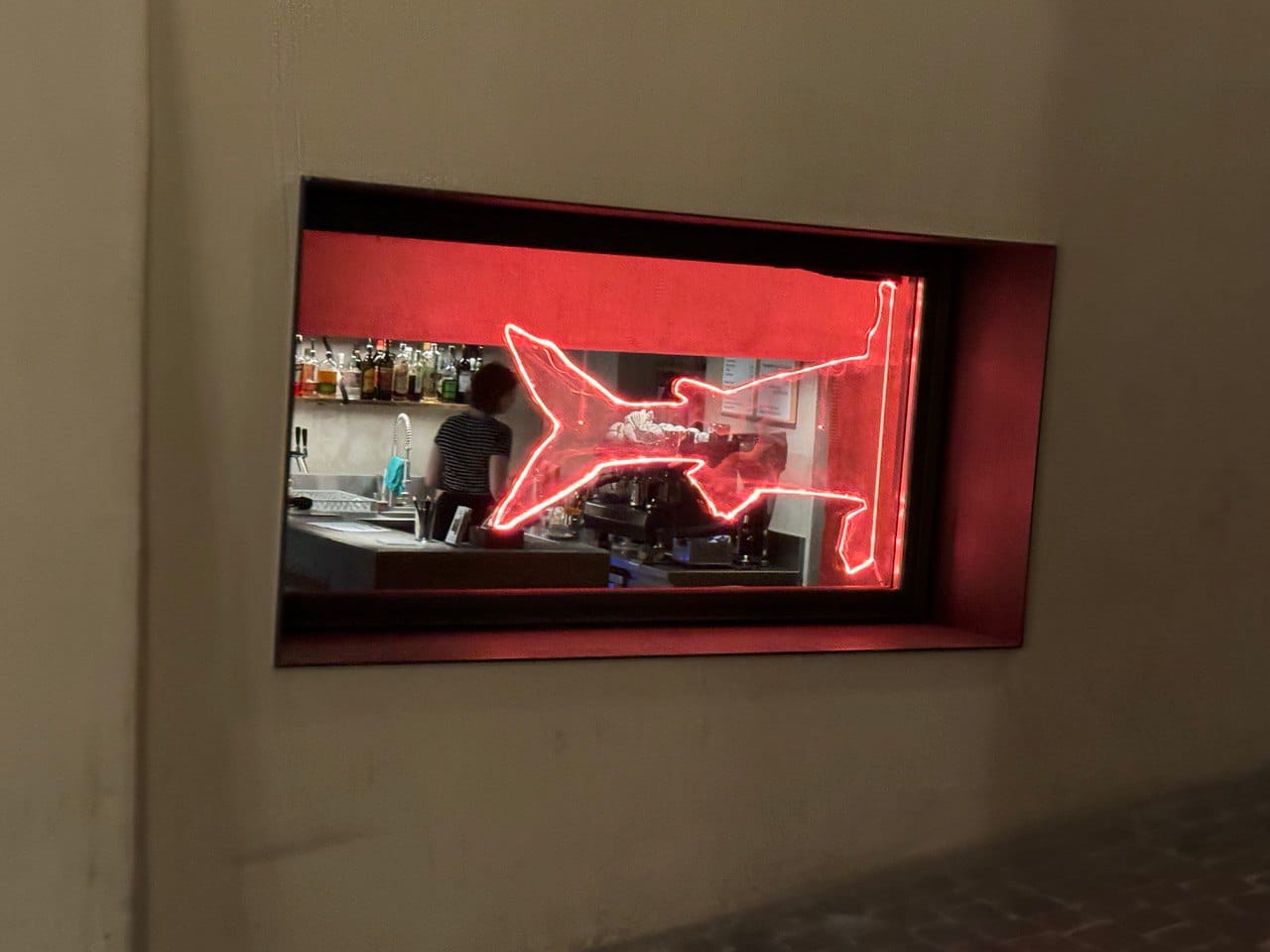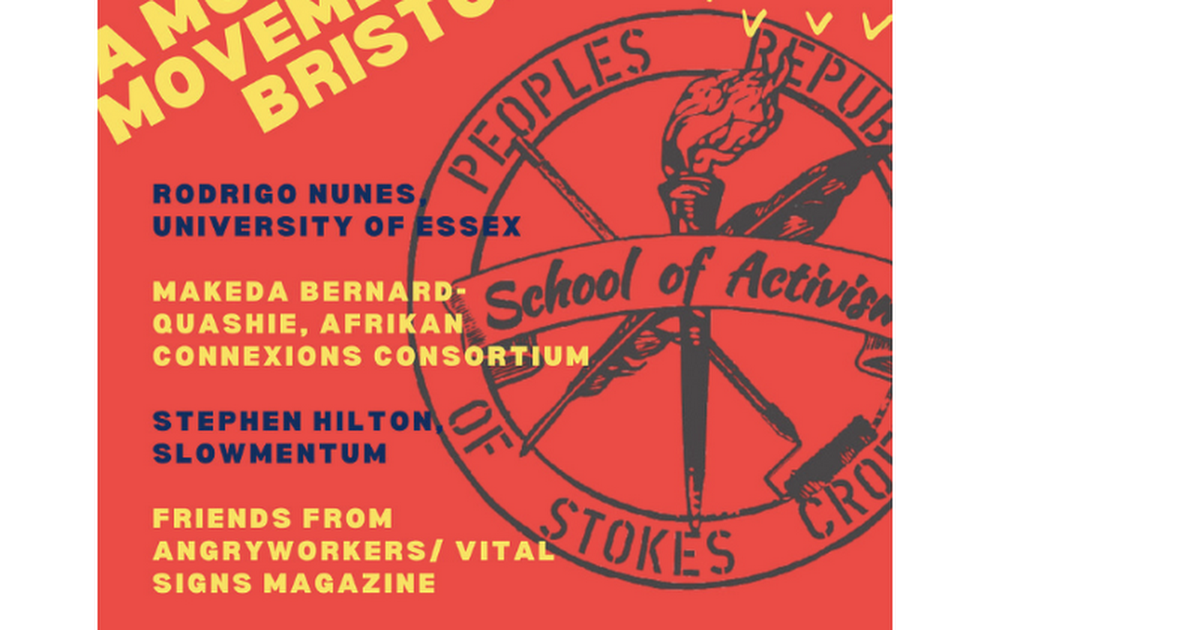Plex: 16 April 2025
Plex Open House; Productive AI; Computer Graphics History Institute; You Can Make the Change You Want; OGM April 10th–The Tariff Rollercoaster; Movement of Movements, Cosmo-Localism, and AI; Profusion; Media and Mood Management

The Biweekly Plex Dispatch is an inter-community newspaper published by Collective Sense Commons on first and third Wednesdays of each month. Price per issue: 1 USD, or your choice of amount (even zero).
In This Issue
- Plex Open House, 23 April (Peter Kaminski)
- Productive AI (Peter Kaminski)
- Computer Graphics History Institute (Julian Gómez)
- You Can Make the Change You Want (Kevin Jones)
- OGM April 10th–The Tariff Rollercoaster (OGM)
- Movement of Movements, Cosmo-Localism, and AI (George Pór)
- Profusion (Ken Homer)
- Media and Mood Management (Ken Homer)
Plex Open House, 23 April
by Peter Kaminski
Come join me, your intrepid Biweekly Plex Dispatch editor/publisher, on Wednesday, 23 April 2025 for a Plex Open House!
Let’s talk about what you like or dislike about Plex, where it might go in the future, and whatever else comes up. Bonus: if folks are interested, a demo of how to put together Plex and other newsletters in both Ghost and Substack.
Zoom: https://us02web.zoom.us/j/89978234923?pwd=dhqPzcLwon5pnMRis5YvFMdJl7VTyn.1
Two times, to cover more of the world:
Wednesday, 23 April 2025
- 7:00 AM PDT (Wednesday)
- 10:00 AM EDT (Wednesday)
- 2:00 PM UTC (Wednesday)
- 3:00 PM BST (Wednesday)
- 4:00 PM CEST (Wednesday)
and
Wednesday, 23 April 2025
- 5:00 PM PDT (Wednesday)
- 8:00 PM EDT (Wednesday)
- 12:00 AM UTC (Thursday)
- 10:00 AM AEST (Thursday)
Time zone conversion courtesy of my Meridian time zone converter, a handy free tool for scheduling global calls.
charles blass
Productive AI
by Peter Kaminski
You know those parents and teachers who said, “Do as I say, not as I do,” and how annoying that was?
Well, that’s me today. Sorry!
Here’s me saying some advice for using the new-fangled Large Language Models (LLMs) like Claude and ChatGPT:
- Use them as assistants (help you with research and structure). Do not use them as oracles (machines that spit out facts).
- Don’t write (or read) AI summaries–seek out the originals instead.
- Don’t use an AI to write finished editorial content, write it yourself with the AI acting as your assistant.
This is still good advice for folks who aren’t yet very familiar with LLMs.
However, with enough experience, context, and editorial responsibility? Turns out you can break those rules, at least sometimes. (Still not all the time!)
Here’s me doing things with Claude 3.7 Sonnet, ChatGPT 4o (and up just recently), Gemini Advanced 2.5 Pro (experimental):
- Still use them as assistants, but sometimes with a lot of freedom. Among many other tasks for LLMs, I’ve been using Claude as a software developer, and I still check its work, but I give it lots of work, and hard things, and it does a pretty good job.
- Use them as oracles. If it’s not a critical thing, I ask an LLM and may just trust it. Sometimes I cross-check with another LLM, sometimes I check with online or other references. I always cross-check when it’s important, but not always when it’s not too big of a deal. Trust but verify; know when to verify, or don’t trust.
- Gemini Advanced 2.5 Pro (experimental) and GPT-4.1 are finally at the point where I think they’re doing good summaries. I’ve also gotten more skilled at prompting for good summaries, especially asking for tweaks (longer, shorter, different language, different focus, etc.) A big part of it is using a model that’s “smart” enough; another big part of it is using a more complex and generative prompt than “write a summary”.
And finally, perhaps still a little controversially, I think I will start publishing a few certain pieces of finished editorial content that was synthesized by an AI in the Plex.
WAIT! Before you close your browser tab and give up on me, let me explain a little more. 🙂
- Not all content; not whole stories. Just tactically useful, short pieces in service of the overall editorial needs of the publication. Structurally editorial pieces, not creative nor personal pieces.
- No banal content. It’s stupid to flood the web with more content just for the sake of distributing content. However, to create productive and useful content, editorially checked by a human for content and value? I think we’re starting to get to the point where that’s useful if done, in certain cases, with taste and good editorial responsibility.
- I will take personal editorial responsibility for anything I publish. To be worth reading, somebody has to take responsibility for what is written, and AI cannot (yet) take personal responsibility for its writing.
- I will make it very clear that what content was AI-generated. I will specify the model and version that created the content. I will provide background context for how the content was created, sometimes including the prompts. (For what it’s worth, it’s not just the prompts that create the output, it’s also the process the prompter went through to synthesize, iterate, and select the content from their available LLMs. Just sharing the prompt is not always useful.)
(The bullets above are developed from a similar list I provided as an addendum to Day 13 of Pete’s AI Homework: “As to when it’s okay to offer AI-generated content as final content, some thoughts.” More of the backstory: I had used Claude to sketch out the Day 13 post, and it did a great job! I ended up shipping that as the core Day 13 post, but then I also added a lot of context and how-I-did-it explanations, so it ended up being a collaborative post between me and Claude.)
As background, along with being a human writer and editor for decades, I have a lot of experience under my belt with AI. I take this relatively small step with a lot of care and expertise:
- 2+ years working personally and professionally with LLMs and other AI.
- 1.5+ years teaching others how to use LLMs and other AI.
- Careful ongoing review of a number of different models, to know their strengths and weaknesses, and when and how they can be trusted or not.
- Back-end technical knowledge about how LLMs work under the hood, including creating multiple chat interfaces using underlying AI APIs.
- And again, making sure I take editorial responsibility for the final product.
I’ve integrated AI productively into my personal and professional life in other places; now it’s Plex’s turn, too. If you’ve got comments, let me know how you feel!
charles blass
Computer Graphics History Institute
by Julian Gómez
The Center for Computer Graphics History held its first board meeting on April 11. One outcome was to rename the center to the Computer Graphics History Institute. With the bylaws approved, the Institute will begin operations soon.

You Can Make the Change You Want
by Kevin Jones
We are building a currency that will be tied to the health of the river, and we are granting the Cherokee a trust agreement that will let them have permanent access to the river cane and other cultural products on our farm as we sell it to the local park system. Their rights will be guaranteed within the provisions of sale.
They heal the ecosystem around the river cane, and we will learn from them and get people to care because the river cane is across from the only place in Swannanoa where it's safe to walk, because we have no sidewalks.
So we will get people to give to restore and regenerate the Owen Park ecosystem, and we will be following indigenous land management practices. But the money given will go for healing in some other places, in food-insecure legacy and low-status neighborhoods sometimes.
When you let indigenous people design the method to heal the river from the hurricane, you get additional biodiversity and lower climate risk. Putting a price on those rights allows you to get paid for these benefits, as your collective risk goes down. There are people who have measured this sort of thing who we'll likely start with.
And we are very interested in community insurance. Post-disaster, the effort to extract a profit at enough volume from for-profit insurance in that community will over time give an edge to community-led efforts that will have a lower total cost of risk. So a currency is forming.
We are designing to be able to move to community-embedded property insurance and rethinking the definition of private and public property and community/commons property and their valuation. All within the frame of reducing total cost of risk, which is the metric you use for community insurance.
When the people own the capital stack, you can make the change you want.
charles blass
Open Global Mind, April 10th, 2025
The Tariff Rollercoaster
I posted about the March 27th OGM call in Plex: 2 April 2025 because I thought it was a great call and wanted to share.
For the April 10th call, I wouldn’t call it a must-watch, but I’m using a new set of prompts and process to create meeting summaries with AI, and I think this came out great, and I wanted to publish it as sort of a test. Gemini wrote the summary. I’ve reviewed it carefully and take editorial responsibility for publishing it here.
What do you think, is this useful? Or is it an affront, because it's synthesized by an AI? Please let me know what you think. –Pete
Here's the call in Jerry's Brain: 2025-04-10 OGM Call.
This document prepared on April 11, 2025 by Gemini Advanced 2.5 Pro (experimental), prompted by Peter Kaminski, using as inputs the Zoom Otter VTT transcript, a Whisper Large v2 transcript generated by Pete, and the chat transcript. It was prepared by an AI from transcripts, and should be useful and generally correct, but it may contain errors.
Meeting Summary
The meeting began with acknowledgments of the current volatile economic climate, referred to as the “tariff roller coaster”, and touched upon the significant market fluctuations and potential insider trading scandals compared to Teapot Dome. Participants discussed the dynamics of the stock market drops, noting that selling requires buyers and questioning who benefits from these shifts. Early chat discussion mirrored this uncertainty, debating the safety of investments like CDs and money market funds, suggesting barter as an alternative. Concerns were raised about geopolitical instability, particularly potential conflicts involving the US, Iran, and China. Klaus Mager shared specific details in the chat about US military deployments (B-2 bombers, carrier groups) aimed at Iran while this risk was being discussed verbally. The dependency on China for rare earth minerals and the potential impact of China cutting off access were highlighted, with Pete Kaminski noting in the chat that China’s control of strategic metals was achieved with surgical precision, contrasting it with the “bull in a china shop” tariff approach.
The core of the discussion revolved around analyzing the Trump administration’s actions, primarily the tariff policies. Various perspectives emerged: some viewed the actions as part of a deliberate, strategic plan (potentially influenced by figures like Steve Bannon, whose explicit views were mentioned in chat) to dismantle the post-WWII global order (Pax Americana), while others saw them as chaotic, incompetent, or driven by childlike impulses. Chat commentary referred to Trump’s strategy as potentially from “The Art of the Deal” or simply “Policy cosplay”. Pete Kaminski viewed it as a dismantling of Pax Americana, possibly orchestrated by others using Trump as a “wrecking machine”. Gil Friend echoed this in the chat, asking Pete who he thought was behind the dismantling and sharing his analytical touchstones: “Follow the money” and “Who benefits”. The potential role of cryptocurrency in potential conflicts of interest and anonymous payments was explored, with Mike Nelson sharing a link in the chat detailing alleged Trump crypto grifts.
Klaus Mager drew historical parallels to demagogues backed by industrialists, suggesting Project 2025 outlines the current agenda driven by elites seeking deregulation. Dave Gray offered a contrasting view, suggesting tariffs and border controls, despite implementation issues due to inconsistency, could strategically benefit American workers, reduce inequality, and foster self-sufficiency – a perspective met with skepticism. Chat participants noted the difficulty of finding American workers for many essential jobs, and Mike Nelson provided a specific example via chat of how removing the “$800 de minimus” exemption harms poorer Americans buying cheap goods online. Jerry Michalski drew parallels between the tariff situation and the 2008 financial crisis (GFC, clarified in chat), suggesting it might be a large-scale financial scheme. Gil Friend shared extensive quotes and a link from Epsilon Theory via chat, elaborating on the view that the administration seeks to replace Pax Americana with a competitive “America First” regime based on bilateral deals, viewing this as a mistake leading to a worse outcome for everyone.
Towards the conclusion, the conversation shifted towards constructive responses. Participants emphasized the importance and potential of local action, community organizing, and leveraging tools like AI to build resilience and bypass federal dysfunction. Gil Friend noted state/local government initiatives stepping into the federal gap, though he also mentioned via chat that the administration is challenging state powers. The potential for regenerative development was mentioned. Chat discussion touched on the Mondragon cooperative and Kim Stanley Robinson’s sci-fi depiction of its evolution. Ken Homer concluded with a reading of Naomi Shahib Nye’s poem “Kindness”, after suggesting in chat a focus on ethics (valuing others) over morality (external rules). The topic for the next call was set to focus on positive actions and opportunities emerging from the current challenges.
Action Items
- Anyone: Find and post the video clip of the US Trade Representative being contradicted by Trump during a hearing to the chat/list (Link posted by Mike Nelson in chat).
- Mike Nelson: Share information/essays by Dean Ball regarding AI regulation and governance (Links posted in chat).
- Ken Homer: Post the poem “Kindness” by Naomi Shahib Nye to the group’s list.
- Jerry Michalski / Group: Prepare for the next meeting focused on the topic: “What are the positive things we might do?” / “What opportunities open up here in the midst of the chaos?”.
Meeting Assessment
The overall sentiment of the meeting was one of significant concern and critical analysis regarding the current political and economic landscape, particularly US administration policies and their global repercussions. The spoken conversation and chat logs both reflected a strong sense of uncertainty and apprehension (“all bets are off”, “terrible mistake”). Descriptions of leadership (“children”, “man-child”), policy implementation (“meat axes and chain saws” vs “scalpel”), and motives (“grifting”, “Too much testosterone!”) conveyed a worried, critical tone.
The chat actively paralleled and supplemented the spoken discussion. It provided specific data points (military movements, tariff exemption details), reinforcing links and resources (Epsilon Theory, crypto grifts, Dean Ball, Cory Doctorow), and quick counterpoints or questions (Gil questioning Dave on inequality). This indicates high engagement beyond the main speakers.
Several key issues remained unresolved:
- There was no consensus on the underlying drivers of current events – whether they represent a coherent (though potentially destructive) strategy, incompetence, chaos, or manipulation by unseen actors.
- The question “who benefits?” was explored extensively verbally and in chat but lacks a definitive answer, though chat pointed towards oligarchs, specific industries (fossil fuels), and potentially Putin.
- Dave Gray’s argument regarding the potential positive impact of tariffs on income inequality was left hanging after his departure.
- Mike Nelson’s potential “rosy scenarios” were mentioned but not elaborated upon.
Despite the heavy focus on problems, the chat contributions on local experiments, Kim Stanley Robinson’s future visions, and the distinction between ethics and morality amplified the meeting’s constructive conclusion. The focus shifted towards local action, resilience, and identifying positive pathways forward, setting a clear, more hopeful (or at least “curious”) direction for the subsequent meeting.
Links Shared in Chat
- Trump Crypto Grifts: https://wendysiegelman.substack.com/p/trumps-crypto-grifts-billions-in (Shared by Mike Nelson)
- US Trade Representative Video: https://www.youtube.com/watch?v=Iy5BJTOKjSk (Shared by Mike Nelson, requested by Jerry Michalski)
- Epsilon Theory - Crashing Pax Americana: https://www.epsilontheory.com/crashing-the-car-of-pax-americana/ (Shared by Gil Friend)
- Jerry’s GFC Videos Playlist: https://www.youtube.com/playlist?list=PLreQNsM8LqWAGeus-IMnxcBAdeVNJ68Vn (Shared by Jerry Michalski)
- 2008 Financial Crisis Wikipedia: https://en.wikipedia.org/wiki/2008_financial_crisis (Shared by Jerry Michalski)
- Link related to Aleksandr Dugin: https://bra.in/3qE3WK (Shared by Jerry Michalski)
- Cory Doctorow on EFF Lawsuit: https://pluralistic.net/2025/04/09/cases-and-controversy/#brocolli-haired-brownshirts (Shared by Ken Homer)
- Cory Doctorow Interview Clip: https://www.youtube.com/clip/Ugkxx-iFHMsSyZ-biN9oDOjxtTIzAPcdOvXV (Shared by Eric Rangell)
- Dean Ball on AI Regulation (AHI): https://theahi.org/ahis-dean-ball-explains-how-to-regulate-artificial-intelligence/ (Shared by Shawn Murphy)
- Dean Ball on AI Regulation (National Affairs): https://www.nationalaffairs.com/publications/detail/how-to-regulate-artificial-intelligence (Shared by Pete Kaminski)
- Dean Ball’s Blog (Hyperdimensional): https://www.hyperdimensional.co/ (Shared by Mike Nelson)
- Dean Ball on Bottom-Up AI Governance: https://www.hyperdimensional.co/p/putting-private-governance-into-action (Shared by Mike Nelson)
- Mondragon Corporation Wikipedia: https://en.wikipedia.org/wiki/Mondragon_Corporation (Shared by Eric Rangell)
- Schoolhouse Rock - Tyrannosaurus Debt: https://schoolhouserock.fandom.com/wiki/Tyrannosaurus_Debt (Shared by Pete Kaminski)
- Eric Rangell’s Interests Video: https://youtu.be/joYI91nxLBs (Shared by Eric Rangell)
charles blass
Movement of Movements, Cosmo-Localism, and AI
by George Pór
George is preparing an article to be submitted to ephemera, and graciously offered to share his prep notes as his article is coming together:

I directed Gemini Advanced 2.5 Pro (experimental) to write an intro to flow from Plex to George's notes, so you'd have an idea of their richness. Here it is below. Gemini wrote the following content, but I have carefully reviewed it and I take responsibility for publishing it. –Pete
Imagine vibrant local movements springing up worldwide, each tackling unique challenges–but how could they unite into something bigger, a global “Movement of Movements,” without losing their grassroots energy? George’s notes dive into this puzzle, exploring the delicate political dance required. It’s a balancing act between letting things grow organically (emergence) and providing just enough structure to work together effectively (design). Could new technologies, perhaps even AI, help navigate this complex choreography and allow movements to build the future they envision, right here and now?
On the economic front, the notes sketch out a compelling alternative called “cosmo-localism.” Picture a world where communities freely share knowledge and designs globally (the “cosmo” part) but produce goods and solutions locally, tailored to their specific needs and environments. This isn’t just about making things differently; it’s about valuing things differently, considering social well-being and ecological health as vital “entangled assets,” aiming to build collaborative networks that can genuinely challenge the logic of traditional capitalism.
So, where does technology fit into this vision? AI is considered not just a futuristic concept but a potential tool for right now–a “coordination engine.” It could help manage the flow of information in the political dance, spotting patterns and connections across diverse groups. Economically, it might assist in matching local needs with shared global knowledge, helping manage resources within these proposed cosmo-local networks. The notes even include a practical example: an AI-generated “pattern card” designed to help activists grapple with the emergence-versus-design tension.
Ultimately, these draft notes offer a fascinating glimpse into building a different kind of future. They grapple with the big questions of how local actions can scale globally, how technology can serve collaboration rather than control, and how movements can build interconnected, resilient systems. It’s a work-in-progress exploring a hopeful pathway where diverse groups learn, share, and coordinate to shape a more just and sustainable world from the ground up.
charles blass
Profusion
by Ken Homer






charles blass
Media and Mood Management
by Ken Homer
Note: Due to a technical glitch, this post was truncated in the last edition of The Plex. Here is the full post with links. –Pete
Regular readers of The Plex know that both Gil Friend and I have written about moods in past issues. Mood, as used in this context, is an emotional feeling-tone of sustained duration that influences how you feel about and orient yourself to future possibilities.
Moods are complex. It’s possible to experience several moods simultaneously or in succession. Take moving to a new place. You might experience curiosity, excitement, wonder and a poignant sense of loss, either one after the other or all at the same time.
You might love your job and have a wonderful boss. This usually leads to uplifting moods where you see multiple possibilities and have both the desire and the sense of agency to act on them. OTOH, your relationships at home with your family might be under stress and duress which tends to narrow the possibilities you see on your horizon and can lead you to feeling trapped, resulting in moods of resentment and resignation.
In addition to being personal, moods unfold in social and generational dimensions. A majority of people on the OGM calls are Baby Boomers. The social and generational dimension of the dominant mood of the industrialized world when we came into it was one of nearly infinite possibility, coupled with an optimism that the world was getting inexorably better. Compare that to Gen Z, whose members have known levels of social, economic, and ecological strain and insanity that casts a very different light on what they see as possible. [For a fascinating take on the cultural moods of the current Seven Generations see chapter 7 of Burnout From Humans.]
“Consumer confidence” may be the best-known example of a social mood. When consumer confidence is up, bull markets rule. When it’s down, bear markets take over. This has recently been painfully demonstrated to millions by the imposition of tariffs.
In this moment of history, us-humans are living through multiple crises of unimaginable proportions. Some terms you may have heard applied to our situation include:
• the poly-crisis (poly = many)
• the perma-crisis (perma = permanent)
• the meta-crisis (meta = beyond)
• wicked messes (wicked = highly resistant to intervention and mess = an ill structured problem where those looking at it can’t agree on the symptoms let alone potential solutions)
• wicked mega-messes (multiple gargantuan entangled or intertwingled messes)
Whatever you choose to call the multiplicity of crises us-humans are confronting today, their impact on moods both personal and collective is undeniable. It’s even more distressing when you consider that these crises require us-humans to collaborate at scales and levels never attempted before. Yet, the mood of many people is one of resignation – “Good luck with that” and/or “That will never happen” – and/or resentment – “Okay Boomer, the world went to Hell on your watch.”
What’s worse, is that the leadership for stewarding course corrections that could avert tragedy is sorely lacking in both corporate and elected positions. Instead, the mindset of business as usual continues to apply engineering and technical approaches to living systems, completely ignoring that Earth’s regenerative capacities have been pushed past the boundaries of sustainability and are now in varying stages of collapse. This does not bode well for those of us trying to be good ancestors!
Mainstream media’s coverage of these messes is abysmal and the well-funded campaign to deny that a changing climate is now Earth’s reality is both wildly profitable and hugely successful. It’s enough to drive you mad – which is exactly what is happening to large segments of the population. If you are exposed to the news these days, your personal mood, as well as that of the tribe you identify as belonging to, is being impacted, often unconsciously, and to a degree most people are not aware of.
I’ve written in the past about the benefits of a media fast. A lot of people I know went on one voluntarily after the election – at least as far a political news goes. We’re all familiar with the tagline of “If it bleeds, it leads”, and how most major media outlets run stories each day that prominently feature calamities and disasters in the making; often told from a perspective that lays blame and creates victims. Media outlets know that featuring bad news is a surefire recipe for creating captive audiences and it sells advertising, so they keep it up even while it amplifies degenerative social moods.
When I was assigned a six-month media fast as part of my professional coaching course 25 years ago, I quickly learned that my daily ingestion of news was contributing to a mood of anger and powerlessness. It was revelatory to me to realize that my lifelong habit of being informed about goings on in the world was actually making me (and by extension, some of the people closest to me) miserable.
Unless and until there is some major unforeseen shift in the winds of fate, us-humans are in for a rough ride in the coming years. Events beyond our control can evoke deleterious moods. Personally, I can’t sustain a mood of anger, outrage, indignation, and powerless for long without dire consequences for my wellbeing. So, taking a lesson from my media fast experience of a quarter of a century ago, I am carefully curating my news feed today and taking media-free days regularly. I want to remain informed, but not so much that it throws me out of my center. IMO, it’s important not to be in denial about how bad things are, while also setting health-supportive boundaries by holding toxic news at bay and tracking “The Defiance” – a term Micah Sifry uses which I much prefer to “the resistance.” We need defiance much more than we need resistance. I hope you can find your way to being part of that.
Today, it’s not only impossible to keep up with the daily deluge of dismay due to the dismantling of democracy, it’s also disheartening and deleterious to do so. So, I’ve cut down my reading about politics to a fraction of what it used to be. I scan the headlines, but I only click on stories about climate, art, human interest, science, etc.
Here are some sources I turn to for news and information to keep me buoyed amid the turbulence:
Letters from An American – Heather Cox Richardson
Heather is a professor of history at Boston College. She places current events in historical context and while her content is often dismaying (because how could it not be?) she reminds us of how often the USA has faced similar dilemmas. Daily updates.
Joyce served for nine years as the US Attorney for the Northern District of Alabama. She knows the law inside and out and has many friends at the DOJ (or friends who were formerly at the DOJ). She places events in an easy-to-understand legal context and focuses on where the courts are holding the line and what can be done. Daily updates.
Meditations in an Emergency – Rebecca Solnit
Rebecca may be best known for her books, A Paradise Built in Hell, Men Explain Things to Me, and Hope in the Dark. She’s a longtime activist and brilliant writer and I love her ability to reframe dire circumstances as openings for action. Her column is a bright light in a dark time. Weekly updates.
The Contrarian – Numerous authors
With the motto: Not Owned By Anyone, The Contrarian is many things, among them, it’s now the home of former WaPo columnist Jennifer Rubin, Pulitzer Prize winning political cartoonist Ann Telnaes, and lawyer Norm Eisen. It’s a place with live interactive videos, a daily round up of news from the Defiance. There’s also “Undaunted” a weekly profile of an inspiring leader who refuses to bend the knee. Honestly, this site has more content than I can keep up with so, I take small sips. Daily updates.
If memory serves, Micah popped up on my radar a couple of years ago with some stellar reporting on the efforts of employees attempting to unionize the Amazon warehouse in Staten Island. The Connector covers a wide variety of political reporting, and I do not always agree with his opinions, but I do find them valuable and informative. Updates weekly.
Non-political news and other sources for staying sane
Cory is a prolific genius! I don’t know how he does it and I can’t keep up, so his blog another source that I take small sips from. His experience from working at The Electronic Frontier Foundation gives him both a network of colleagues and deep insights into how important free and open access to the internet is. I am continually amazed at his keen observations and enjoyable writing style. Plus, he coined the term “enshitification!”
Reasons to be Cheerful – David Byrne
Talking Heads front man David Byrne started this newsletter a couple of years ago. Each issue highlights good things happening in the world. Updates weekly.
Explorations and Explanations – Dave Gray (yes, THAT Dave Gray!)
An irregularly published newsletter from XPLANE Founder and possibilitarian Dave Gray – who’s a regular participant on our weekly OGM calls. I don’t recall Dave mentioning politics much in any of his newsletters, but they a delight to read and I always learn something interesting whenever they show up in my inbox. Thanks Dave!
My list of shows and movies – for when you need a break from the news.
Back in the ‘90s my wife began to keep a list of movies and live events that we went to. I took over the project from her in the early 2000s and it has grown into a spreadsheet with over 1,500 entries that encompass everything from the beautiful animation of Studio Ghibli to political and nature documentaries to kids movies to British detective shows to juvenile humor (Clerks or Bridesmaids anyone?) to serious science shows.
Final thought. Here is the text of the Fifth of the Five Wonderful Precepts as articulated by Thich Nhat Hahn:
Aware of the suffering caused by unmindful consumption, I vow to cultivate good health, both physical and mental, for myself, my family, and my society by practicing mindful eating, drinking and consuming. I vow to ingest only items that preserve peace, well-being and joy in my body, in my consciousness, and in the collective body and consciousness of my family and society. I am determined not to use alcohol or any other intoxicant or to ingest foods or other items that contain toxins, such as certain TV programs, magazines, books, films and conversations. I am aware that to damage my body or my consciousness with these poisons is to betray my ancestors, my parents, my society and future generations. I will work to transform violence, fear, anger and confusion in myself and in society by practicing a diet for myself and for society. I understand that a proper diet is crucial for self-transformation and for the transformation of society.
As Joyce Vance says at the close of all her newsletters:
We’re in this together.
charles blass
Thank you for reading! The next edition will be published on 7 May 2025. Email Pete with suggested submissions.
Grateful appreciation and many thanks to Charles Blass, Julian Gómez, Ken Homer, Kevin Jones, and George Pór for their kind contributions to this issue.
